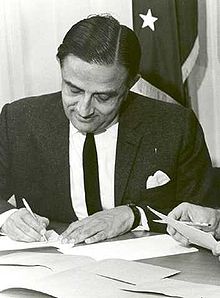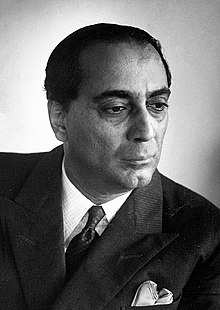
A lander is a spacecraft that descends towards, then comes to rest on the surface of an astronomical body other than Earth. In contrast to an impact probe, which makes a hard landing that damages or destroys the probe upon reaching the surface, a lander makes a soft landing after which the probe remains functional.
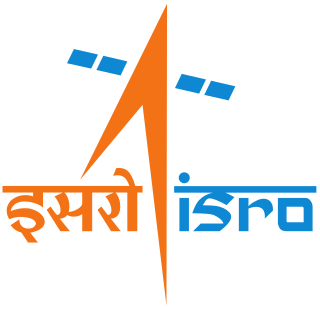
Indian Space Research Organisation is India's national space agency. It serves as the principal research and development arm of the Department of Space (DoS), overseen by the Prime Minister of India, with the Chairman of ISRO also serving as the chief executive of the DoS. It is primarily responsible for space-based operations, space exploration, international space cooperation and the development of related technologies. The agency maintains a constellation of imaging, communication and remote sensing satellites. It operates the GAGAN and IRNSS satellite navigation systems. It has sent three missions to the Moon and one mission to Mars.

Chandrayaan-1 was the first Indian lunar probe under the Chandrayaan programme. It was launched by the Indian Space Research Organisation (ISRO) in October 2008, and operated until August 2009. The mission included an orbiter and an impactor. India launched the spacecraft using a PSLV-XL rocket on 22 October 2008 at 00:52 UTC from Satish Dhawan Space Centre, at Sriharikota, Andhra Pradesh. The mission was a major boost to India's space program, as India researched and developed indigenous technology to explore the Moon. The vehicle was inserted into lunar orbit on 8 November 2008.

Vikram Ambalal Sarabhai was an Indian physicist and astronomer who initiated space research and helped to develop nuclear power in India. Often regarded as the "Father of Indian space program", Sarabhai was honored with Padma Bhushan in 1966 and the Padma Vibhushan (posthumously) in 1972.

A Moon landing or lunar landing is the arrival of a spacecraft on the surface of the Moon, including both crewed and robotic missions. The first human-made object to touch the Moon was Luna 2 in 1959.

Mylswamy Annadurai is an Indian scientist working as vice president for Tamil Nadu State Council for Science and Technology, Chairman, Board of Governors, National Design and Research Forum. He is often dubbed as the "Moon Man of India".

G. Madhavan Nair is an Indian space scientist and a former chairman of the Indian Space Research Organisation, and Secretary to the Department of Space, Government of India. His tenure saw commencement of Indian Human Spaceflight Programme and launch of extraterrestrial exploration mission Chandrayaan-I.

Anil Bhardwaj is an Indian astrophysicist. He is the director of the Physical Research Laboratory (PRL), which is a unit of the Department of Space of Government of India in Ahmedabad, India.

Indian Deep Space Network (IDSN) is a network of large antennas and communication facilities operated by the Indian Space Research Organisation to support the interplanetary spacecraft missions of India. Its hub is located at Byalalu, Ramanagara in the state of Karnataka in India. It was built under the leadership of S K Shivakumar, the then ISTRAC Director and inaugurated on 17 October 2008 by the former ISRO chairman G. Madhavan Nair.

Chandrayaan-2 is the second lunar exploration mission developed by the Indian Space Research Organisation (ISRO) after Chandrayaan-1. It consists of a lunar orbiter, the Vikram lunar lander, and the Pragyan rover, all of which were developed in India. The main scientific objective is to map and study the variations in lunar surface composition, as well as the location and abundance of lunar water.

The Moon Impact Probe (MIP) developed by the Indian Space Research Organisation (ISRO), India's national space agency, was a lunar probe that was released by ISRO's Chandrayaan-1 lunar remote sensing orbiter which in turn was launched, on 22 October 2008, aboard a modified version of ISRO's Polar Satellite Launch Vehicle. It discovered the presence of water on the Moon.

K. Radhakrishnan a.k.a. Koppillil Radhakrishnan is an Indian space scientist who headed the Indian Space Research Organisation (ISRO) as Chairman of Space Commission, Secretary of the Department of Space, Government of India. Under his leadership, India became the first country to reach Mars in its first attempt.
Thekkethil Kochandy Alex is an Indian space scientist. He was the director of the ISRO Satellite Centre (ISAC) of Indian Space Research Organisation (ISRO) (2008–2012) and Member, Space Commission. He specialized in electro-optic systems and satellite technology. Starting with the first Indian satellite Aryabhata, he has been responsible for the sensor systems in all the Indian satellites. Under his leadership the Laboratory for Electro Optics Systems (LEOS) was established in 1993 and from the inception he was its director till 2008. He was conferred "Dr. Vikram Sarabhai Distinguished Professorship" in 2011.

A lunar rover or Moon rover is a space exploration vehicle designed to move across the surface of the Moon. The Apollo program's Lunar Roving Vehicle was driven on the Moon by members of three American crews, Apollo 15, 16, and 17. Other rovers have been partially or fully autonomous robots, such as the Soviet Union's Lunokhods, Chinese Yutus, Indian Pragyan, and Japan's LEVs. Five countries have had operating rovers on the Moon: the Soviet Union, the United States, China, India, and Japan.

Mars Orbiter Mission (MOM), unofficially known as Mangalyaan, was a space probe orbiting Mars since 24 September 2014. It was launched on 5 November 2013 by the Indian Space Research Organisation (ISRO). It was India's first interplanetary mission and it made ISRO the fourth space agency to achieve Mars orbit, after Soviet space program, NASA, and the European Space Agency. It made India the first Asian nation to reach Martian orbit and the second national space agency in the world to do so on its maiden attempt after the European Space Agency did in 2003. It also made India the fourth nation to orbit another planet after the United States, the Soviet Union, and ESA member states.
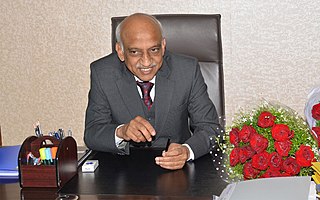
Aluru Seelin Kiran Kumar is an Indian space scientist and former chairman of the Indian Space Research Organisation, having assumed office on 14 January 2015. He is credited with the development of key scientific instruments aboard the Chandrayaan-1 and Mangalyaan space crafts. In 2014, he was awarded the Padma Shri, India's fourth highest civilian award, for his contributions to the fields of science and technology. Kiran Kumar previously served as Director of Ahmedabad Space Applications Centre.

The Chandrayaan programme also known as the Indian Lunar Exploration Programme is an ongoing series of outer space missions by the Indian Space Research Organization (ISRO) for the exploration of the Moon. The program incorporates a lunar orbiter, an impactor, a soft lander and a rover spacecraft.

Ritu Karidhal Srivastava is an Indian scientist and aerospace engineer working in the Indian Space Research Organisation (ISRO). She was a Deputy Operations Director to India's Mars orbital mission, Mangalyaan. She has been referred to as one of the many "Rocket Women" of India. Giving tribute to her excellence in Mangalayaan mission, a Bollywood film Mission Mangal was created where Indian actress Vidya Balan did her role.
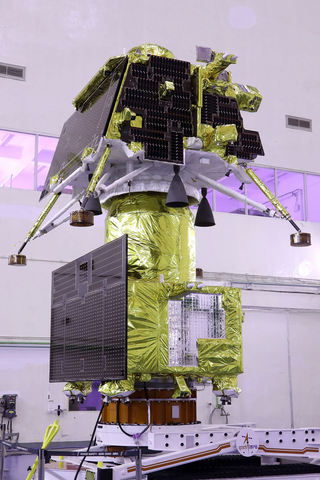
Chandrayaan-3 is the third mission in the Chandrayaan programme, a series of lunar-exploration missions developed by the Indian Space Research Organisation (ISRO). The mission consists of a Vikram lunar lander and a Pragyan lunar rover was launched from Satish Dhawan Space Centre on 14 July 2023. The spacecraft entered lunar orbit on 5 August, and India became the first country to touch down near the lunar south pole, at 69°S, the southernmost lunar landing on 23 August 2023 at 18:04 IST, ISRO became the first agency to land on the south pole of the moon in its first attempt and overall the fourth space agency to successfully land on the Moon, after USSR, NASA and the CNSA.
